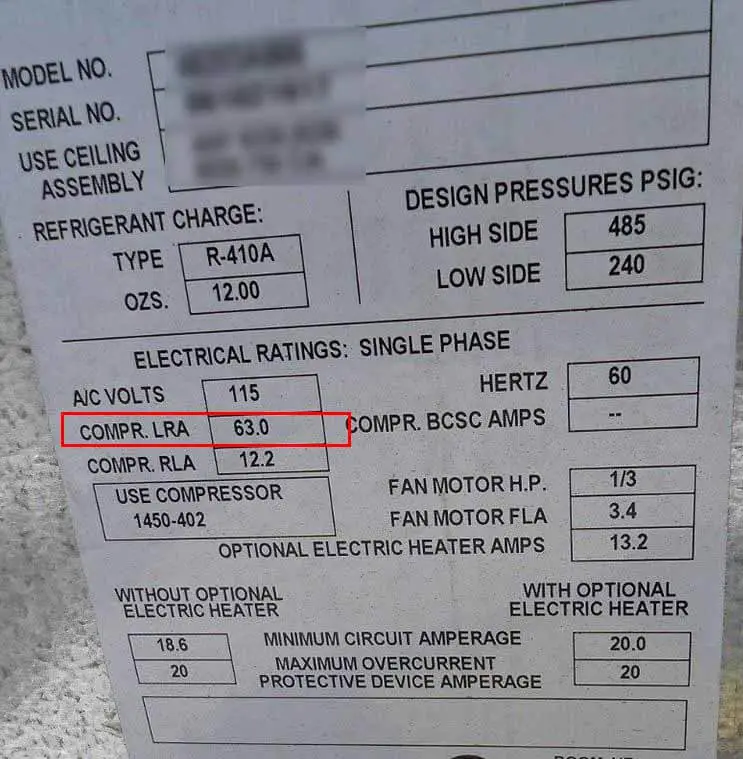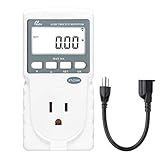One of the main components of a solar installation is the inverter. Sizing it incorrectly will have negative effects, on your comfortability, on the air conditioner (and other appliances), and on the inverter itself.
In this article, I’ll explain the key specifications that need to be considered when sizing an inverter, and I’ll show you how to match these specs to the specs of your RV air conditioner.
I get commissions for purchases made through links in this post.
Key specifications to look for in an inverter
There are 3 key specifications that matter the most when sizing an inverter for your RV air conditioner:
Continuous Power
This is the main rating of the inverter (in Watts) and it represents the amount of power that the inverter can continuously deliver to your air conditioner and other appliances. For example, this inverter from Renogy is rated at 3000 Watts, which means it can deliver up to 3000 Watts continuously.
When choosing an inverter, make sure its continuous power rating is higher than your A/C’s running power. The inverter should be able to deliver your air conditioner’s running wattage comfortably to avoid failure.
Surge Power
Also measured in Watts, this is the maximum amount of power that the inverter can deliver instantaneously. This metric is useful when sizing an inverter for loads that require a huge start-up power, such as air conditioners and refrigerators.
The surge power of an inverter is usually double its continuous power and can handle that amount of power for a short amount of time. For example, this 3000W Renogy inverter has a surge power of 6000 Watts.
However, some inverters can handle more surge power than others. For example, this 3000 Watt inverter from AIMS has a surge power rating of 9000 Watts, which according to the manufacturer, it can handle for up to 20 seconds.
In any case, the inverter you choose should be able to handle the start-up power of your air conditioners. (more on that below)
Input voltage
An inverter’s job is to convert low voltage (12, 24, or 48 Volts) DC power to a higher voltage (120 Volts) AC power. The input of the inverter is connected to the terminals of your batteries, and its output is connected to the RV’s main panel or to the air conditioner itself.
The input voltage that the inverter can work with is specified by the manufacturer. For example, the inverters mentioned above are strictly designed for a 12 Volt battery configuration.
However, there are some inverters on the market that can work with 24 and 48 Volt configurations. For example, this 2000W GIANDEL inverter is rated at 24V for its input voltage.
So make sure the input voltage on the inverter matches your battery bank voltage configuration before making a purchase.
Now, let’s see how you can choose the right inverter for your system using the information available to you.
What size inverter to run RV AC?
The average roof RV air conditioner is rated at 13500 or 15000 BTUs, air conditioners of this size will typically draw 1300-1600 Watts when running. However, when they’re starting, these ACs can draw up to 7500 Watts for a brief moment.
To successfully power an RV air conditioner, the inverter needs to be rated at 3000-4000 Watts.
However, with a soft starter device, you would only need 2000 Watts of inverter power.
To size the inverter correctly, you’ll need to answer 2 questions:
- How much power does your A/C draw when it running?
- How much power does your A/C draw when it’s starting?
How much power does your RV AC use when running?
As mentioned above, the typical rating of an RV AC is either 13500 or 15000 BTUs. Generally, these air conditioners have an Energy Efficiency Ratio (EER) of about 10, which means a 13500 BTU A/C will typically draw 1350 Watts, and a 15000 BTU A/C will draw 1500 Watts.
Click here to read more on this topic.
Essentially, the higher the BTU rating on your ac, the more power it’ll draw. The best way to measure this power usage is to use an electricity usage monitor.
Devices such as the Kill-A-Watt meter will provide precise data about your AC’s power usage and energy consumption.
How much power does your RV ac use when starting :
Generally, the starting wattage of an air conditioner can be anywhere from 2 to 6 times its running wattage, which means your typical RV A/C can draw up to 7500 Watts at start-up. If your inverter is not designed for this kind of surge wattage, your air conditioner will fail to start.
This is because the compressor in your AC unit is sometimes “locked” and requires a relatively high amount of current to “unlock”. This amount of current is referred to as Locked Rotor Amperage or LRA and you can use it to calculate the potential starting wattage of your air conditioner and therefore size your inverter.
You can find the LRA of your AC on the specification sheet (usually stuck to the side of your AC unit on the roof) or on the compressor itself.
For example, the following spec sheet is from a 13500 BTU AC unit:

The manufacturer specifies 63 Amps as the LRA of the compressor. Using the LRA, the start-up wattage of this AC unit can be calculated:
Potential Start-up Wattage (Watts) = Voltage (Volts) x LRA (Amps)
Potential Start-up Wattage (Watts) = 115 Volts x 63 Amps
Potential Start-up Wattage (Watts) = 7245 Watts
The surge wattage will not necessarily reach 7245 Watts whenever this air conditioner is turned on, but the inverter that could run this AC should be sized accordingly.
It is also important to note that the inverter should be a Pure Sine Wave inverter (as opposed to a Modified Sine Wave inverter).
For this particular AC unit, a good choice would be something like the 4000W inverter from GIANDEL. This inverter is rated at 4000 Watts continuous power and 8000 Watts surge power.
However, there is a way around using an inverter of this size.
By using a soft starter, you can reduce the start-up power of your air conditioner by up to 70%. The next section explains what a soft starter is and how it can help you reduce the size of the inverter that is required to run your A/C.
Using a soft starter for your RV air conditioner
The heart of an air conditioner is its compressor, which is essentially a motor. Typically, motors require a high amount of electricity (inrush current) to reach their nominal speed. In the case of air conditioners, this inrush current is 4 to 6 times the normal current.
A soft starter is used to limit this inrush current, and the 60-ish amps that are normally needed to start up a 13500-15000 BTU air conditioner, can be reduced to 18-30 amps.
As a result, the air conditioner will operate in a more smooth manner, which extends the lifespan of the AC and reduces the stress on the inverter (and the whole system for that matter). This is especially true if you’re planning on running all of your appliances on a single inverter.
For example, if you run both the AC and a refrigerator on the same inverter, it is very possible that the inverter will fail at some point.
Additionally, not all RV parks have 50 Amp shore power. If your batteries are depleted and you’re stuck with a 30 Amp supply, your air conditioner will probably not be able to start up. A soft starter such as the EasyStart by Microair or the SoftstartRV by NetworkRV will solve these issues.
The following video explains the installation process of these devices:













